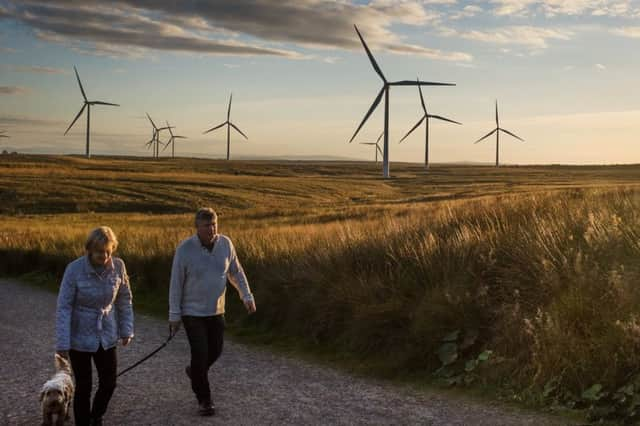Who should pay for renewable energy subsidies in Scotland?


GMB, which represents energy workers, called for subsidies on renewable energy to paid for through general taxation. It follows reports that energy bill payers have paid £328m to wind farm owners, mainly based north of the border, for not generating any energy.
The union highlighted a prediction from the Office for Budgetary Responsibility (OBR) that the surcharge the UK’s 27m households already pay is set to as much as treble over the next four to five years to £10 per week.
Advertisement
Hide AdAdvertisement
Hide AdBut the Scottish Government said support for the renewables sector benefitted both domestic and business consumers in the long-term.
GMB criticised the current system which sees the average wind farm receive roughly half of its income from the electricity wholesale price and half from subsidy via the Renewables Obligation Certificate (ROC) – the cost of which is passed on to consumers through their energy bills.
When the energy grid reaches capacity, National Grid stops wind farms from generating, in order to prevent damage to the overhead wires and potential major system disruption.
The wind farm owners then request government compensation for their lost ROC’s revenue.
Justin Bowden, GMB national secretary for energy, said: “Electricity is a natural monopoly and in this case the public are being milked by paying twice over - through spiralling consumer energy bills and taxpayer hand outs.”
Scottish Government energy minister Paul Wheelhouse said renewable energy brought jobs, boosted the economy and contributed to Scotland’s ambitious climate change targets.
He added: “Through delivering efficient Scottish projects, to meeting UK legal commitments on renewables. Importantly, onshore wind is now our lowest cost renewable technology and is now far cheaper than nuclear power and can make a very strong contribution to a balanced energy mix while also helping keep prices down for consumers.
“We have been very clear with the UK Government that its failure to support routes to market for new onshore wind and islands wind projects, to give them price stability, has negative consequences.
Advertisement
Hide AdAdvertisement
Hide Ad“Constraint payments are just one tool currently used by the National Grid to manage transmission. They reflect congestion on parts of the electricity network where, in some situations, because the grid capacity has not yet caught up with electricity generation, the lowest cost and most efficient option in the short-term is to pay generators to increase or reduce their output. In the medium to long-term, investment in increased grid capacity.
“Increasing grid capacity and developing energy storage solutions, such as more pumped hydro capacity, would dramatically reduce the need for these payments, and we have a major programme of grid investment worth billions of pounds already underway in Scotland.”
A spokesman for the Department of Business, Energy and Industrial Strategy said: “The UK is a global leader in tackling climate change with government support for renewables driving down the cost of clean electricity.
“Social and environmental policies make up a small proportion of bills. Our transition to a low carbon economy means that the costs of delivering renewable energy will continue to fall over time.”